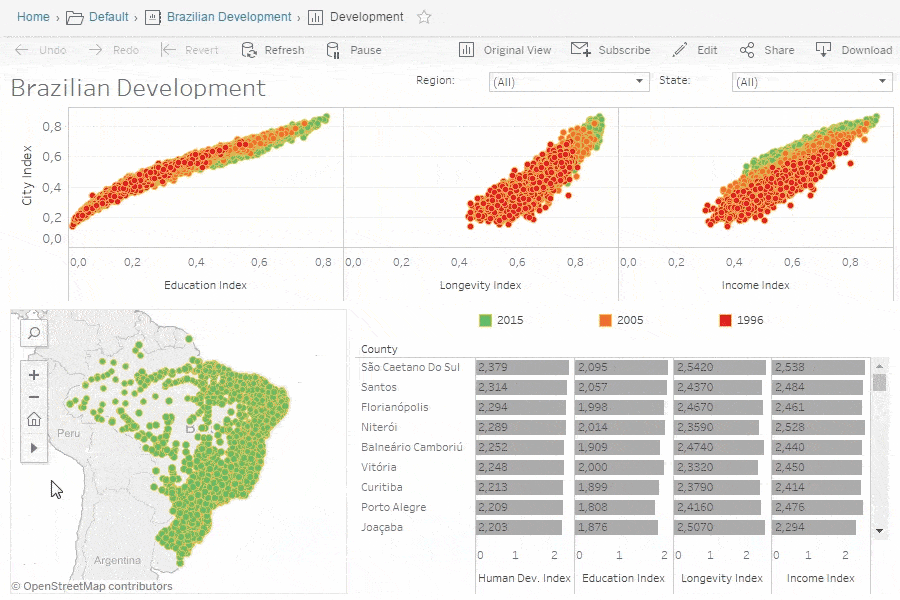Data-Driven Decision Making: Using Analytics to Innovate Marketing Strategies in 2025
Meta Description: Explore how data-driven decision making and analytics can reshape marketing strategies in 2025. Discover tools, examples, and actionable insights to stay ahead in the evolving landscape.
As the landscape of marketing continues to evolve, businesses are recognizing the increasing importance of data-driven decision making. With 2025 on the horizon, understanding how to leverage analytics will be paramount for marketers aiming to stay competitive and relevant. This blog post delves into the significance of utilizing analytics for innovative marketing strategies, offering practical insights, real-world examples, and steps to harness data effectively.
Author Introduction: With over 5 years of experience in SEO and a track record of helping over 20 companies optimize their online presence, Renata Markov is passionate about driving informed marketing strategies through data analytics.
Understanding Data-Driven Decision Making
What Is Data-Driven Decision Making?
Data-driven decision making (DDDM) refers to the practice of basing business decisions on data analysis and interpretation rather than intuition or personal experience. In marketing, this approach enables professionals to tailor strategies based on measurable outcomes, consumer behavior, and market trends.
Importance in Marketing
The relevance of DDDM cannot be overstated. According to a report by Deloitte, organizations that adopt a data-driven marketing strategy are six times more likely to be profitable year-over-year. As data becomes more accessible and sophisticated, embracing analytics not only aids in understanding customer preferences but also enhances the efficiency and effectiveness of marketing campaigns.
Key Marketing Trends for 2025
Emerging Analytics Tools and Techniques
As we look into 2025, several tools and techniques are set to dominate the marketing analytics landscape:
- Predictive Analytics: This uses historical data to forecast future outcomes, helping marketers allocate budgets to high-performing channels.
- Customer Journey Mapping: Visualizing every customer interaction aids in identifying pain points and enhancing user experiences.
- Machine Learning: Algorithms analyze patterns in large datasets to drive automation in decision-making.
The global market for analytics software is expected to reach $150 billion by 2025, according to Research and Markets, highlighting the significant investment and reliance on analytics tools in the coming years.
Case Studies: Real-World Applications of Data Analytics
Netflix: A Case Study in Personalization
Netflix is a prime example of a company successfully leveraging analytics to innovate its marketing strategy. By analyzing viewer data, Netflix personalizes recommendations and content offerings, resulting in a 93% retention rate among users exposed to personalized suggestions. This strategic use of data not only enhances user satisfaction but also drives subscriber loyalty in a highly competitive environment.
Starbucks: Adapting to Consumer Preferences
Starbucks utilizes customer data to understand purchasing behavior and preferences. With insights derived from their loyalty program, they can tailor promotions and adjust inventory according to consumer demand, ensuring they meet customer expectations effectively.
Impact and Advantages of Data-Driven Strategies
Data-driven marketing strategies often lead to measurable outcomes. Companies that integrate analytics into their marketing efforts experience a 15-20% increase in ROI on campaigns compared to those that do not leverage data. A HubSpot report revealed that data-driven companies are five times more likely to make decisions faster than their competitors, underscoring the efficiency DDDM brings to various processes.
Steps to Implement Data-Driven Decision Making
1. Collect Data
Start by determining what type of data is essential for your marketing strategy:
- Demographic Data: Age, gender, location, etc.
- Behavioral Data: Engagement levels, purchasing history.
- Transactional Data: Sales data, transaction values.
2. Analyze Data
Utilize different analytics methods to interpret the collected data:
- A/B Testing: Compare two versions of a campaign to see which performs better.
- Cohort Analysis: Evaluate the behavior of groups of users over a period of time.
3. Make Decisions
Translate insights from data analysis into actionable marketing strategies. Consider developing a framework that aligns marketing efforts with insights derived from data.
4. Monitor Results
Track the effectiveness of your marketing strategies by setting Key Performance Indicators (KPIs) such as conversion rates, retention rates, and customer satisfaction scores.
Tools to Enhance Data-Driven Marketing
The right tools can greatly facilitate the data-driven decision-making process:
| Tool | Description | Key Features |
|---|---|---|
 Google Analytics Google Analytics |
Tracks website traffic and user behavior. | Real-time analytics, conversion tracking. |
 HubSpot HubSpot |
An all-in-one marketing platform that offers data analytics. | Automated reporting, CRM integration. |
 Tableau Tableau |
A data visualization tool that helps to make sense of complex information. | Interactive dashboards, real-time data. |
Challenges of Implementing Data-Driven Strategies
Despite the benefits, several challenges can impede successful implementation:
- Data Literacy: A lack of understanding of data analysis methods may hinder decision-making.
- Overwhelming Data: If not managed effectively, excessive data can lead to confusion and inefficiency.
- Actionable Insights: According to a study by McKinsey, 70% of organizations struggle to turn data into actionable strategies.
The Future of Data-Driven Marketing
Looking ahead, the integration of artificial intelligence will continue to transform the marketing landscape. According to Gartner, 75% of marketers will integrate AI into their data analytics processes by 2025. This evolution is expected to enhance consumer insights, automate complex decision-making, and further optimize marketing strategies.
Conclusion
Data-driven decision making is no longer a secondary option but a necessity for businesses aiming to thrive in the marketing landscape of 2025 and beyond. By understanding the importance of analytics, adopting innovative tools, and implementing efficient strategies, marketers will not only enhance their decision-making processes but also achieve remarkable results.
To stay ahead, explore data analytics tools that can bolster your marketing efforts. Invest in training for your teams, or consult with experts who can guide you in harnessing the full potential of data-driven strategies. Embrace the future of marketing today!
